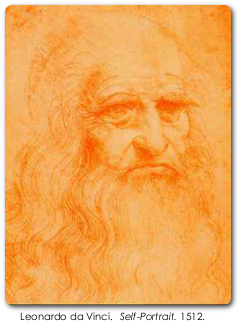The Da Vinci Code, Part Six: "Did Jesus Marry?"
Discuss this article here.
 The real core of The Da Vinci Code is the notion that Jesus and Mary Magdalene were married and had children together. According to author Dan Brown, this notion is so shocking that Christianity since Constantine has carefully suppressed the evidence that proves it. He seems convinced that the whole Christian faith would collapse if Jesus had a wedding.
The real core of The Da Vinci Code is the notion that Jesus and Mary Magdalene were married and had children together. According to author Dan Brown, this notion is so shocking that Christianity since Constantine has carefully suppressed the evidence that proves it. He seems convinced that the whole Christian faith would collapse if Jesus had a wedding.
This theory forces us to answer two questions: first, could Jesus have married and had children, and second, did He? Each question deserves an answer, and if either question is answered contrary to Brown’s assumptions, his whole theory will deflate like a punctured tire. If Jesus could have married, then Christianity does not depend upon the question of whether He did. If Jesus did not marry, then Christianity does not depend upon the question of whether He could.
Brown seems to assume that the Jesus who is worshipped by the Christian churches could not have married. He seems to think that the marriage of Jesus would unravel the whole fabric of Christianity. He never attempts to substantiate or even examine this assumption. He simply advances evidence that he considers adequate to show that Jesus did actually marry and have children. What is his evidence?
Brown admits that the New Testament documents never hint that Jesus was married, but he points out that they do show that Mary Magdalene traveled with Jesus (Luke 8:1‐3). He argues that marriage was a cultural necessity for Jewish males during the First Century: for a man to remain unmarried was considered a scandal. Brown also claims that The Gospel of Mary Magdalene has Jesus showing favoritism to Mary. Finally, he asserts that The Gospel of Philip has Jesus kissing Mary Magdalene. Furthermore, The Gospel of Philip calls Mary a “companion” to Jesus, and Brown declares that the word for “companion” in Aramaic is reserved for spouses and lovers.
 Brown’s actual evidence for the marriage of Jesus relies almost exclusively upon four ancient sources: the Gospel of Luke, The Gospel of Mary Magdalene, The Gospel of Philip, and First Century Jewish social custom. This is not a large amount of evidence. It can be evaluated in a few paragraphs. If Brown’s evidence is deficient, then no particular reason exists to believe that Jesus was ever married or that He had children.
Brown’s actual evidence for the marriage of Jesus relies almost exclusively upon four ancient sources: the Gospel of Luke, The Gospel of Mary Magdalene, The Gospel of Philip, and First Century Jewish social custom. This is not a large amount of evidence. It can be evaluated in a few paragraphs. If Brown’s evidence is deficient, then no particular reason exists to believe that Jesus was ever married or that He had children.
Luke 8:1‐3 states, “And it came to pass afterward, that he went throughout every city and village, preaching and shewing the glad tidings of the kingdom of God: and the twelve were with him, And certain women, which had been healed of evil spirits and infirmities, Mary called Magdalene, out of whom went seven devils, And Joanna the wife of Chuza Herod’s steward, and Susanna, and many others, which ministered unto him of their substance.” Dan Brown is correct that, according to this passage, Mary Magdalene did travel with Jesus. So did Joanna. So did Susanna. So did many other women. Nobody argues that Jesus was married to all these women. Since Luke treats them all identically, this passage makes no contribution at all toward discovering whether Jesus was married.
What about First Century expectations for Jewish males? Brown alleges that a man remaining unmarried was scandalous in Jewish culture. The evidence, however, indicates otherwise. As a matter of fact, males commonly chose to remain single among the Essenes and within the Qumran community. The New Testament documents depict John the Baptist as a man who remained single. They also seem to indicate that Saul of Tarsus remained single. Even Jesus talked about men who made themselves “eunuchs for the kingdom of heaven’s sake” (Matt. 19:12). While the overwhelming majority of Jewish men chose to marry, singleness was not the scandal that Brown asserts. Nothing about Jewish customs from the First Century indicates that Jesus had to be married.
The evidence from The Gospel of Mary Magdalene has already been reviewed. That document has Peter saying that Jesus loved Mary more than all other women. It also has Levi saying that Jesus loved Mary more than He loved the male disciples. These comparisons clearly indicate that the references in The Gospel of Mary are not to romantic love, but to the kind of caring concern that Jesus exercised toward all people, male or female. Could Jesus have felt greater compassion or even affection for Mary Magdalene than for others? Possibly. Even if He did, however, this is no evidence for a marriage. Marriage is not even mentioned.
Like The Gospel of Mary, The Gospel of Philip is a Gnostic document. It was probably written in Greek during the latter half of the Third Century. No copies of The Gospel of Philip were known to exist until a Coptic translation was discovered during the mid‐Twentieth Century at Nag Hammadi in Egypt. The text is in very poor condition, and parts of it cannot be reconstructed with certainty. The section that is germane to The Da Vinci Code makes three assertions about Jesus and Mary Magdalene. The first assertion is that she was the “companion” of Jesus (Dan Brown asserts that the word for “companion” in Aramaic can only be applied to spouses and lovers). The second assertion is that Jesus loved her more than all His disciples. The third assertion is that Jesus used to kiss Mary.
Brown argues that by calling Mary the “companion” of Jesus, The Gospel of Philip is hinting at a marriage or at least a relationship of sexual intimacy. According to Brown, the Aramaic word for “companion” only applies to spouses and lovers. This is a puzzling remark for a couple of reason. First, The Gospel of Philip was not written in Aramaic. It was written in Greek, and the surviving manuscript is a translation into Coptic. In both those languages, the word for “companion” means “companion”. Furthermore, Brown is wrong even about the Aramaic. Even if The Gospel of Philip had been written in Aramaic, the word for “companion” still means “companion” and certainly does not necessitate marriage or physical intimacy. To all appearances, Brown is just making this up.
The Gospel of Philip does state that Jesus loved Mary Magdalene more than all His disciples. To Brown this implies romantic love and marriage, but that is hardly likely. The statement in The Gospel of Philip is really quite similar to the one in The Gospel of Mary, and both appear to be saying the same thing, i.e., that Jesus felt a great deal of compassion or affection toward Mary. This would not be unthinkable, even given a traditional, Christian understanding of Jesus. It is miles away from a marriage, however.
The Da Vinci Code makes much of the fact that Jesus is supposed to have kissed Mary Magdalene. What Dan Brown seems to have forgotten, however, is that a kiss was a traditional greeting among friends during the First Century, just as it is in some parts of the world today. The kiss of greeting was certainly practiced in the early church and it is mentioned more than once in the New Testament. If Jesus and Mary Magdalene kissed one another in greeting, this should surprise no one. It is certainly no evidence of a marriage. Indeed, by itself it does not indicate anything more than a casual acquaintance.
However many leaky buckets you pile on top of each other, they still aren’t going to hold water. Brown wants us to believe that Jesus and Mary Magdalene were husband and wife, but every one of his arguments has huge holes in it. The evidence for a marriage simply does not exist. Any suggestion that Jesus ever married is a sheer, unsupported assertion. No evidence—none—exists to back up this assertion.
The evidence that Jesus had children has even less support. A review of Brown’s ancient sources reveals that none of them even mentions children. The very idea was unthinkable to orthodox Christians and to Gnostics alike. The suggestion that Jesus had children is a speculation of the middle ages, not an ancient belief supported by evidence.
Did Jesus marry? The answer to this question is almost certainly negative. But could Jesus have married? Would a married Jesus really undermine the Christian faith? That is the next question that must be answered.
–––––
This essay is by Kevin T. Bauder, president of Central Baptist Theological Seminary. Not every one of Central’s professors, students, or alumni necessarily agrees with every opinion that it expresses. In The Nick of Time is also archived here.
Discuss this article here.
- 19 views


Discussion